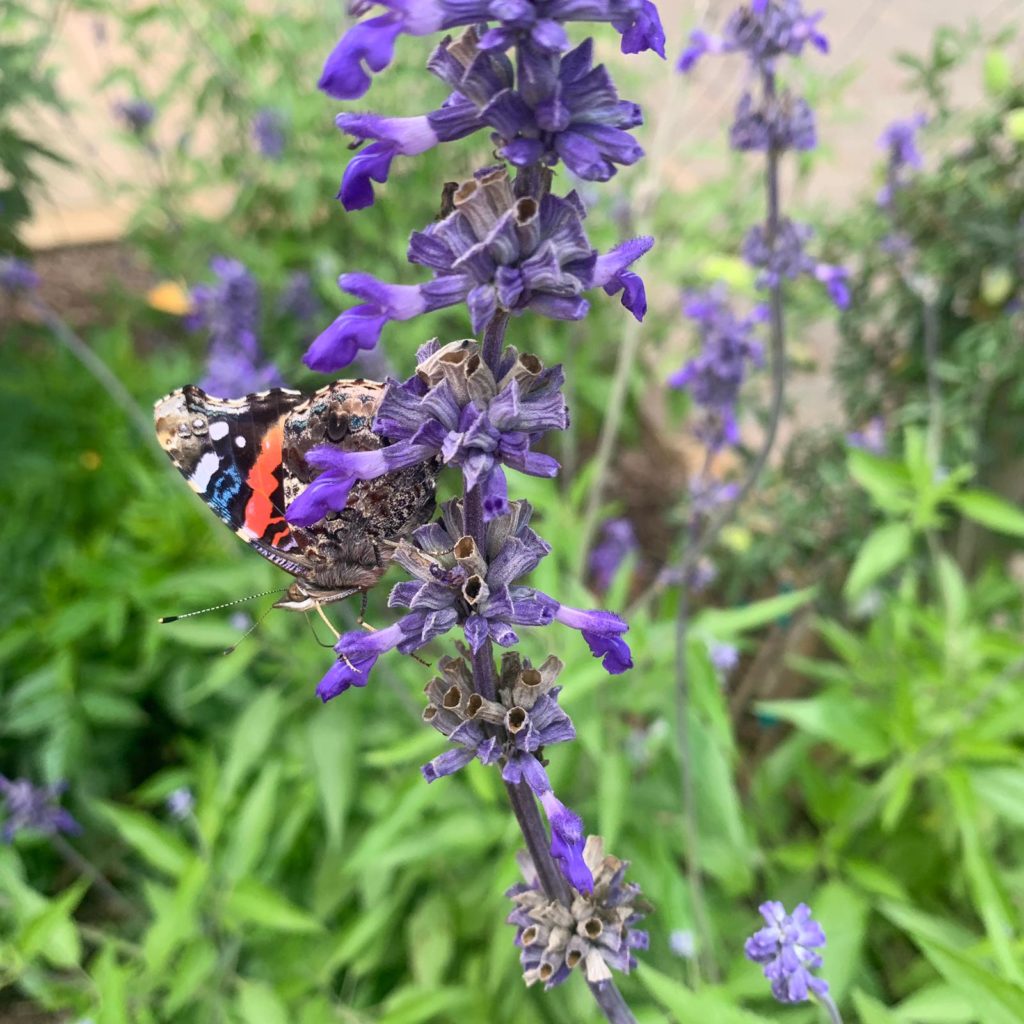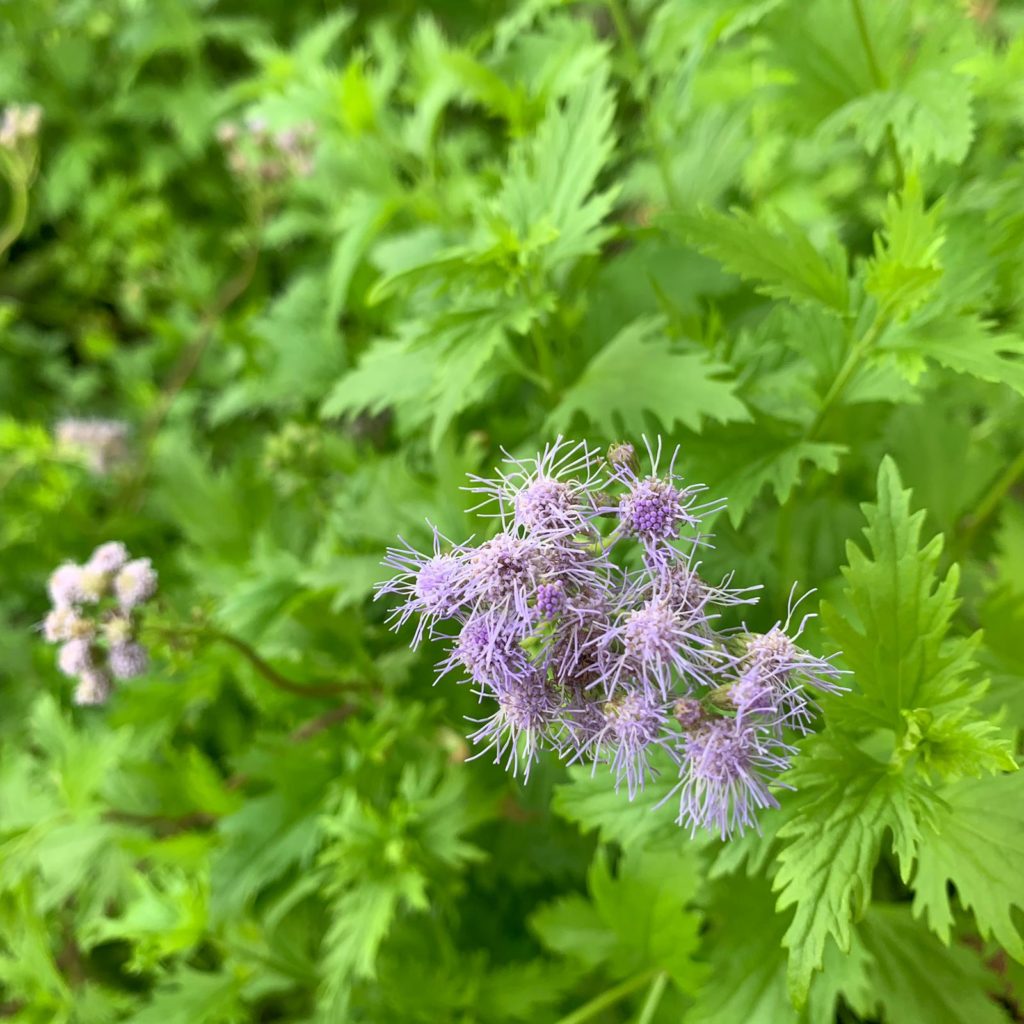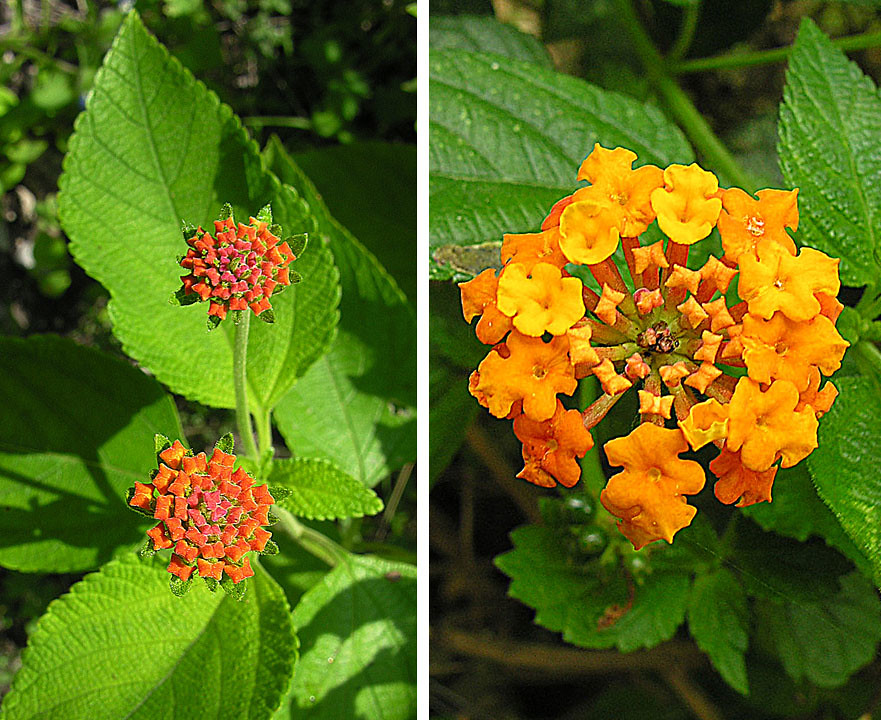Choosing Texas native plants provides you with a beautiful, resilient landscape, and provides native wildlife with food and habitat. Native plants attract hummingbirds, butterflies, bees, lizards, frogs – all of which are critically important to the environment. Texas natives range from large trees like Cedar Elm down to small shrubs and flowers like Blackfoot Daisy. We stock a lot of native plant varieties here at Gill’s, so I picked my five favorites:
Henry Duelberg Salvia (Salvia farinacea) – A Texas superstar with purple blooms that grows 2-3 feet tall and can take a good bit of sun. Henry Duelburg brings in hummingbirds as well as moths and butterflies.

Red Turk’s Cap (Malvaviscus arboreus) – Turk’s cap is a great native that you can grow in the shade! You can find Turk’s cap growing wild as an understory plant around South Texas and even at parks like Hazel Bazemore County Park and Oso Bay Wetlands Preserve. Its red tubular blooms are great for butterflies and hummingbirds, its dense foliage provides shelter for lizards and frogs, and it produces fruit for the birds.

Gregg’s Mist Flower (Conoclinium greggii) – Gregg’s Mist Flower is one of my favorite plants to recommend for attracting butterflies. It has low-growing foliage with small light blue flowers that are a magnet for butterflies. It is a must for any butterfly garden and does well in part-shade areas.

Copper Canyon Daisy (Tagetes lemmonii) – These yellow blooming natives provide great pollen for bees. Their fragrance is released by wind and smells great and it also will help repel mosquitos!

Texas Lantana (Lantana urticoides) – This Native variety of lantana loves the sun! Its orange and yellow blooms attract a variety of butterflies, bees, and the occasional hummingbird moth. Birds love the seeds.

Texas Parks and Wildlife even offers a backyard wildlife habitat certification if you plant over 50% natives in your landscape and meet a few other simple requirements. In addition to supporting wildlife, these plants are also drought tolerant, helping us all save water!

-Wyatt



Janet Morris says
What gallon pot sizes do you sell Lantana in? I am looking for well established Lantanas in the biggest pots you sell
Audrey says
Just bought 2+acres near Swinney Switch of nothing except a tiny house. As soon as water well is dug I want to start planting native plants .Deer visit often so would like to know some deer resistant plants and trees.
.
james says
Texas natives will be resistant, as they have evolved with deer. But when there’s a drought and no new growth, they will probably visit you to select whatever is least distasteful to them. They have to eat something! One of your best bets will be muley grass. And you may need to put hog wire cage around your trees to keep the bucks from scraping their antlers.
Sally Gill says
Wyatt – I have to say how thankful I am to get to work with you everyday at Gill’s. I love your passion for plants and your passion for challenging us to be our best in the garden. Thank you!